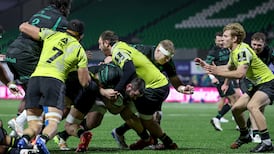When the British Open returns to Royal Lytham next month, competitors will notice a change to the 494-yard, par-five sixth, with a view to making it less vulnerable. A severe tightening to the entrance to the green before the 1988 Open failed to do the trick, so the Royal and Ancient have decided to move the tee fractionally to the left.
The hope is that by increasing the angle of the dog-leg in this way, the threatening, left-side rough will be brought more into play. But how do they know it will work? How can the R and A be sure they won't have to rethink their strategy, as their brethren in the USGA have been forced to do with the putting surface of the 18th green at Southern Hills this week?
It is widely accepted that things went badly wrong at Carnoustie, for the staging of the 1999 Open. And the USGA have made similar errors, as have the European Tour and the USPGA Tour, in setting up courses for tournament play. In fact by the standards of the equipment industry, expertise in golf administration can be decidedly thin, especially at club level.
On-the-job training seems to be the answer. Meanwhile, equipment companies are employing the best brains that money can buy. But the Americans believe they have found a way of levelling the fairway, so to speak: they are setting up university degree courses in golf.
So it is that Prof Curt Hudek, an accountant-turned-golf professional (shades of Padraig Harrington) teaches in the Professional Golf Management programme at Arizona State University East. And here's the interesting bit. After boning up on such diverse subjects as microeconomics, statistics, marketing, finance, golf-course irrigation and swing analysis from 8 a.m. until noon, the student then plays the game in the afternoon.
In this way it is hoped to produce graduates who are up to speed on all relevant aspects of golf, both as a sport and a business. "My friends act surprised that you can actually get a degree playing golf, but that's cool," said an 18-year-old Arizona freshman. But as Hudek points out: "It's not uncommon for a golf course to do $5 million in revenue. That's a tidy business."
He went on: "Of the 17,000 golf courses in the US, only about 15 per cent are professionally managed. So it's hardly surprising that the industry is looking for people like these kids - college educated and addicted to golf."
The Arizona model is one of 11 university programmes in the US, whereby students sit a two-year course for a career in golf as club professionals, instructors or course managers.
Whatever about the game's administration at the highest level, the process of running a club can involve relatively serious decision making. And getting things wrong, can be a very costly business. Which is why the American degree courses make so much sense.
"Any golfer who has not thrown a club is not serious about the game. That's all there is to it." The 1958 US Open champion at Southern Hills, Tommy Bolt, otherwise known as Thunderbolt, defending his reputation for possessing the worst temper in golfing history.











